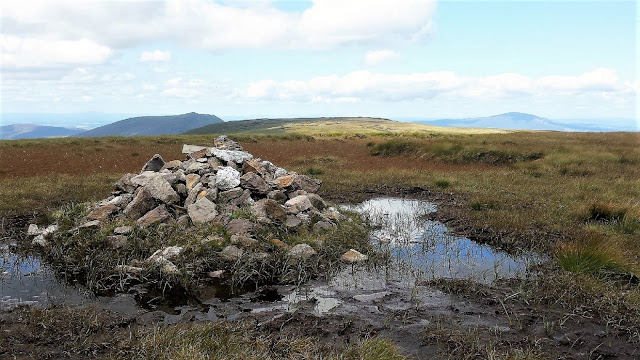
Comeragh Ridges A ridge is a long narrow stretch of high ground which for the most part separates river valleys. A spur or a shoulder or a “srón” is a sloping area of high ground which links a valley to a ridge. Sometimes it can be difficult to differentiate a spur/shoulder from a ridge. Where does a spur or a shoulder or a “srón” end and a ridge begin? Is there a minimum length of high ground before the term “ridge” can be invoked? Well, there you have me! At any rate, what most of us landscape lovers can agree on is that ridges often provide glorious walking in good weather because of the relatively dry underfoot conditions and the wide-ranging views usually available from their lofty heights. View from Knockanaffrin summit towards Coumduala and the Comeragh Plateau Main Comeragh Ridges Undoubtedly, the standout ridges on the Comeraghs are Knockanaffrin and Monavullagh . Both have a generally north to south running trend (like the nearby Blackstairs) which sets them apart from t
